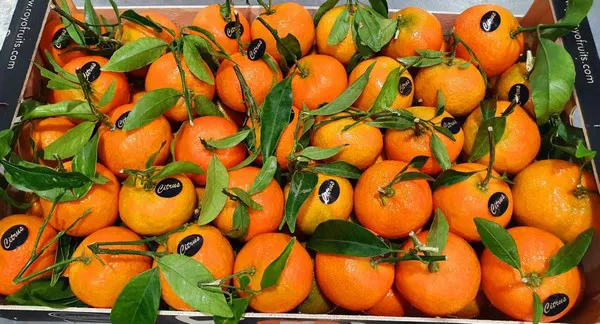The Spanish citrus campaign is now right in the middle of the switch between its first and second seasons. While the last batches of Clemenules are arriving this week, there are increasingly more transaction with Nadorcott, Tango and Ortanique, among others. As for oranges, the Navel and some Navel Late are already being harvested in Andalusia.

“The commercial volumes of Clemenules have been considerably reduced this year, both due to a lack of good sizes and to quality issues. There have been a lot of discards, and the latest rains haven't helped either," says Alfons Royo, manager of the Royo Fruits company. This, together with the efforts to maintain health and prevention measures for COVID, has caused production costs to rise this year, although the buyers in large distribution and wholesale markets do not seem to understand it. Fortunately, this year the entire Clemenules production has been sold, something that hasn't happened in other years.”
According to the citrus producer and exporter, a similar trend to last year's is being observed in this second phase of the campaign. “There is again a bit of speculation in the field, where the fruit is being bought for prices that do not correspond to what the market is determining. Although at the end of last year's season there was an excessive demand for citrus fruits due to the outbreak of the pandemic, I do not think the same will happen this year. We have suffered the biggest disappointment with the oranges from the southern hemisphere, which reached exorbitant prices during the summer and then collapsed with the arrival of the first Spanish Navelinas.”
The snow storm and the frosts of the last two weeks caused the citrus supply to be more limited. “The roads were full of snow, which made transportation difficult, delaying shipments throughout Europe. Moreover, the rains prevented the harvesting and storage tasks for several days. Those who did not plan this well were left with empty chambers and, for several days, the demand was greater than the supply. Now, after the frosts, the demand has stabilized, and it is rather low,” says Alfons Royo.
"The ripening of second season varieties is at a more advanced stage than usual, around 20 days ahead; something that will be positive for shipments to European markets, which will find fruit with a very good flavor. However, this will also limit our ability to export to overseas destinations. Last year, there were already logistical problems to ship citrus fruits to distant markets like China, and I don't think exports will pick up again this year. There is still uncertainty and there are not enough guarantees at the logistical level.”
Royo Fruits also supplies the British market, where the entry into force of Brexit has caused delays at customs. "What we have noticed the most has been the increase in the amount of paperwork needed to go through customs, and although we have seen a slight increase in costs, sales prices have not suffered. We hope that tariffs will not end up being applied to Spanish mandarins and oranges, since this market would otherwise cease to be attractive for us.”
For more information:
Alfons Royo
Royo Fruits SL
T: +34 977 71 91 51
M: +34 655 162 643
royofruits@royofruits.com
www.royofruits.com
